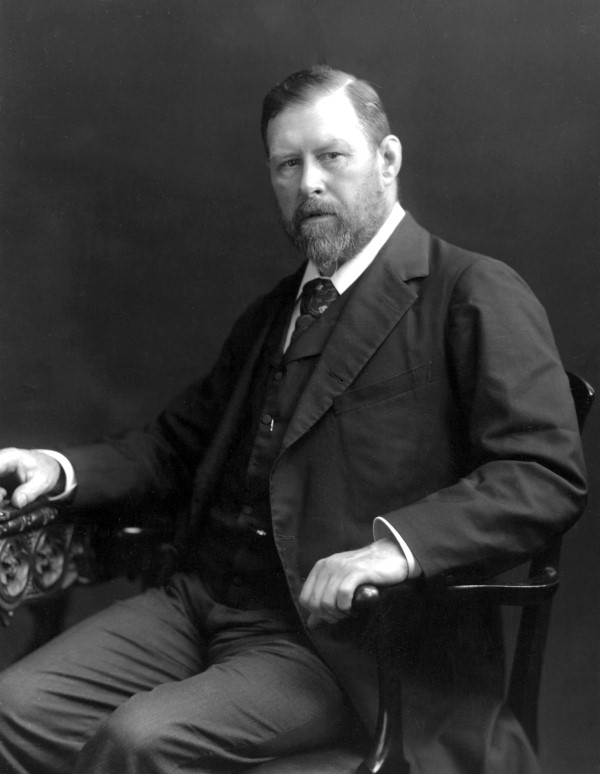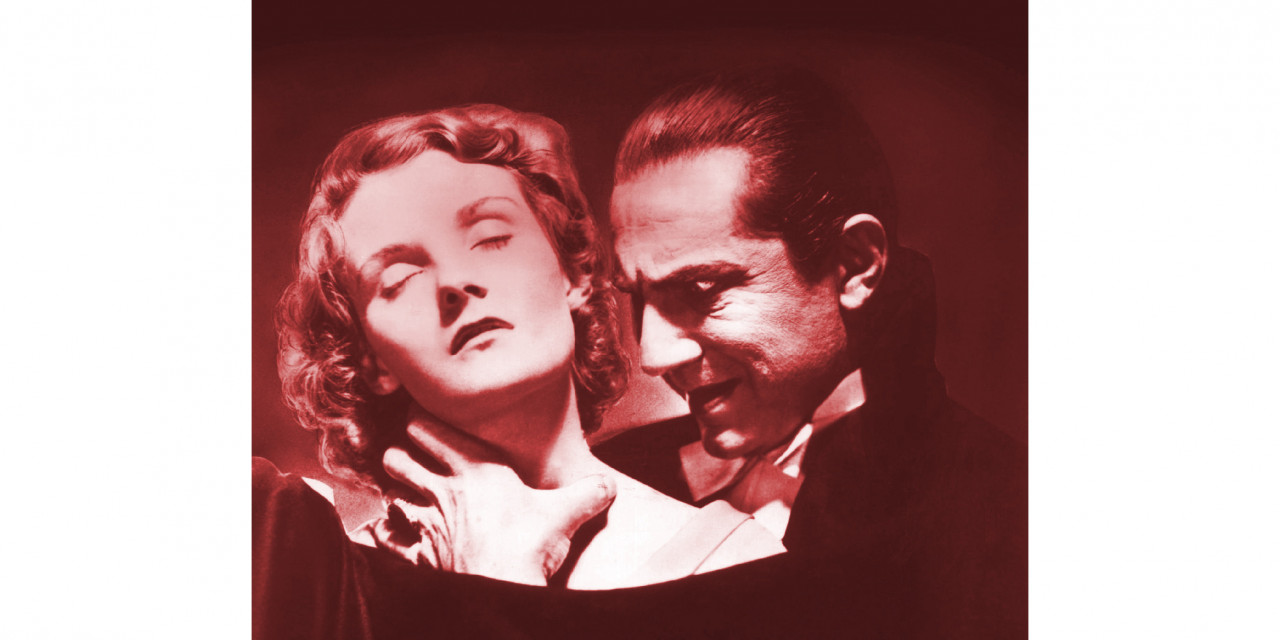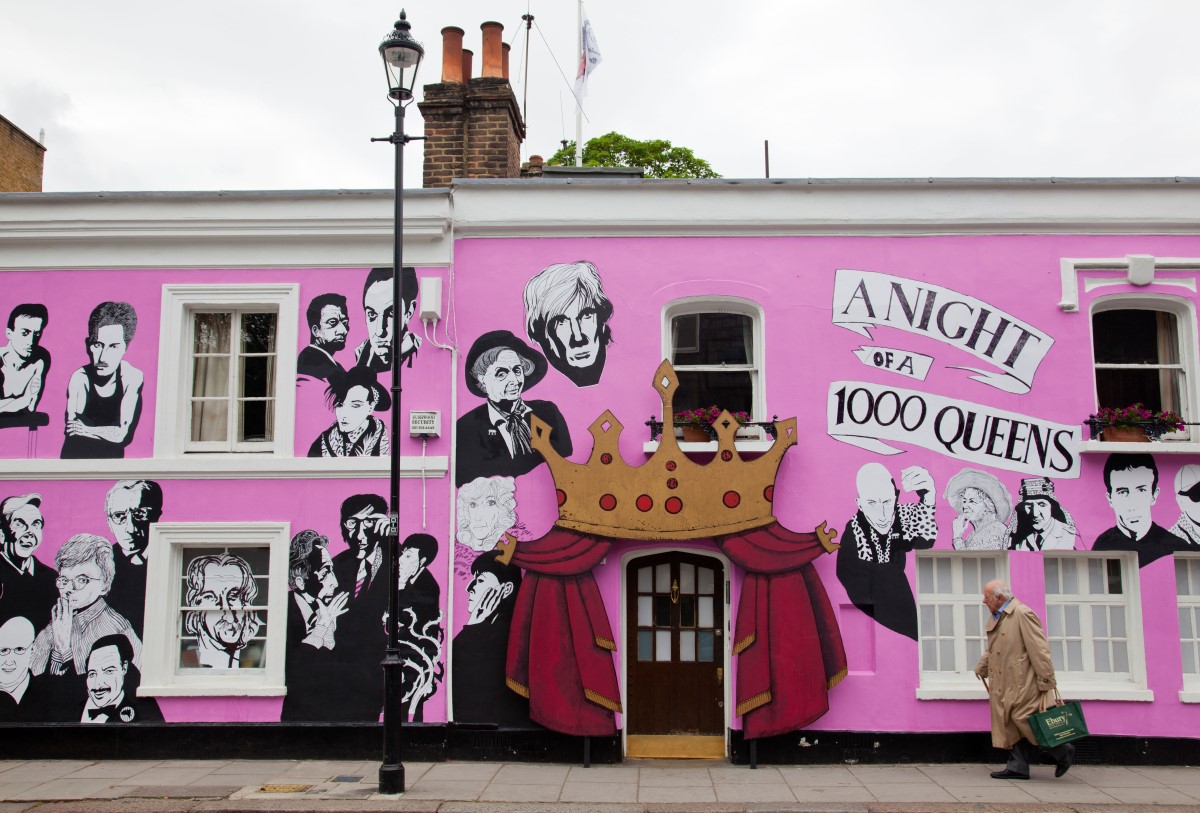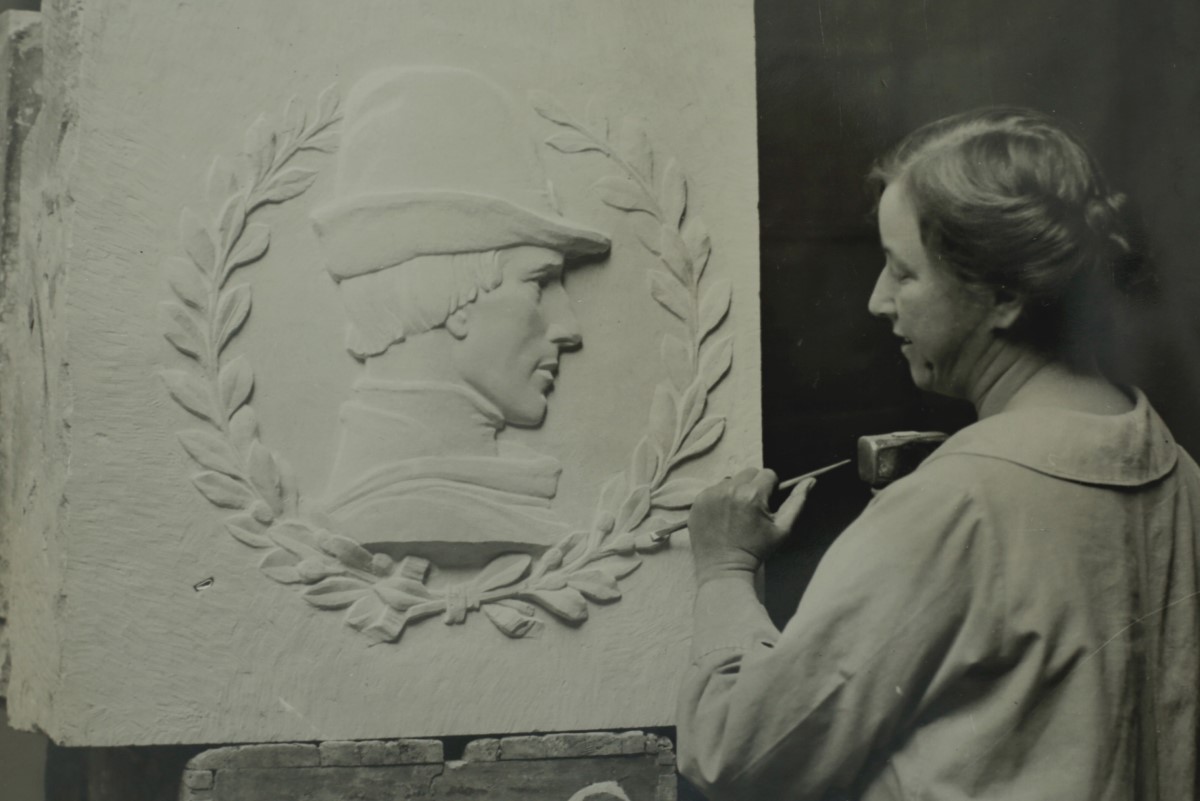With Halloween approaching, we remember the creator of Dracula who lived and died at St George’s Square
By Corrie Bond-French
When the demolition ball took to a row of houses in Pimlico in the 1960s to make way for new school buildings, number 26 St George’s Square crumbled into dust. A fitting ending, perhaps, to the house where Bram Stoker, author of Dracula, had breathed his last.
It’s now 125 years since the novel, widely celebrated as the best gothic horror novel of all time, was published, but when Bram Stoker died 110 years ago in April 1912, the newspapers were reporting on the disaster of the sinking of RMS Titanic, identifying survivors and the lost.
Bram Stoker’s obituary in The Times, near hidden on page 15, barely mentioned his fiction writing, noting instead his service to The Lyceum theatre and his biography of his friend and business partner Sir Henry Irving as his literary legacy. Bram Stoker died never imagining that his epistolic novel about bloodthirsty vampires would become a giant in the global literary landscape.
Bram was survived by his son Irving Noel and wife Florence, who would go on to vigorously defend the copyright and legacy of her husband’s work. Many other aspects of Bram Stoker’s life remain shrouded in mystery. Born in Clontarf, Dublin, on November 8 1847, he was bedridden in early childhood with an unknown illness, only beginning to walk at the age of seven. A voracious reader, he eventually attended Trinity College Dublin, grew tall and was an accomplished athlete. He graduated in 1871 with a degree in science, followed by a master’s in mathematics.
Unfulfilled by his job in the civil service at Dublin Castle, Bram started dabbling in journalism, writing theatre reviews for the Daily Mail. After impressing the most famous actor of the day, Sir Henry Irving, with his review of Hamlet, the two struck a friendship.
When Irving leased the Lyceum Theatre in London in 1878, Bram became his business manager. He and Florence moved to London, living in Chelsea before settling in Pimlico, and the Lyceum’s success (takings of more than £2million from 1878 until Sir Henry’s death in 1905) was as much credited to Bram’s innovations as Irving’s acting talent and celebrity.
With his early interest in folklore and stories inspired by his travels, Bram wrote his novels and short stories, including Dracula, The Lady Of The Shroud and The Lair Of The White Worm, almost as a side-line. But when Sir Henry Irving died in 1905, Bram suffered a debilitating stroke. Despite his illness, he worked on Sir Henry’s biography, published in 1906.
The Times obituary which noted this as his chief literary legacy barely mentions his fiction writing, except to call it ‘creepy’.
In the last months of his life, the Royal Literary Society stepped in to provide financial support. Controversy remains about the cause of Bram’s death – in 1975 his nephew Daniel Farson suggested that syphilis was a cause.
His relationships continue to confound his descendants who now control the Bram Stoker Estate. W. Parker-Stoker writes: “If she (Florence) harboured a grudge against Henry Irving – it is widely believed that she did – there is little evidence that she made a public point of it.
“Allegations of discord between Bram and Florence have been repeated so often and colourfully that rumour frequently displaces truth. Frigidity on Florence’s part, and everything from womanising to gay dalliances on Bram’s, have been supposed.”

Florence first gave permission for a Dracula stage adaptation in 1926 but launched a (not entirely successful) legal bid to have all copies of the 1922 film Nosferatu destroyed as a flagrant copyright infringement of the Dracula story.
With so many memorable film, television and stage iterations, so genre-defining and popular has Dracula become that it is difficult to imagine a time when the Count did not feast on the public’s imagination or darkest fears. The actor Bela Lugosi who famously played Dracula in the 1930s film (and acted in A Passport To Pimlico) considered it such a career-defining role that he was eventually buried in his iconic cloak.
In recent years, Bram’s great-great nephew Dacre opined in the Irish Times that Bram’s absence among the celebrated literary canon of Dublin is an oversight that requires further remedy, although a start has been made.
Bram Stoker, a man of mystery who died an unsung hero of gothic literature, would never have imagined his most famous character would cast such a long shadow, or feature on the national curriculum, to be taught at the same school his final home eventually made way for.








